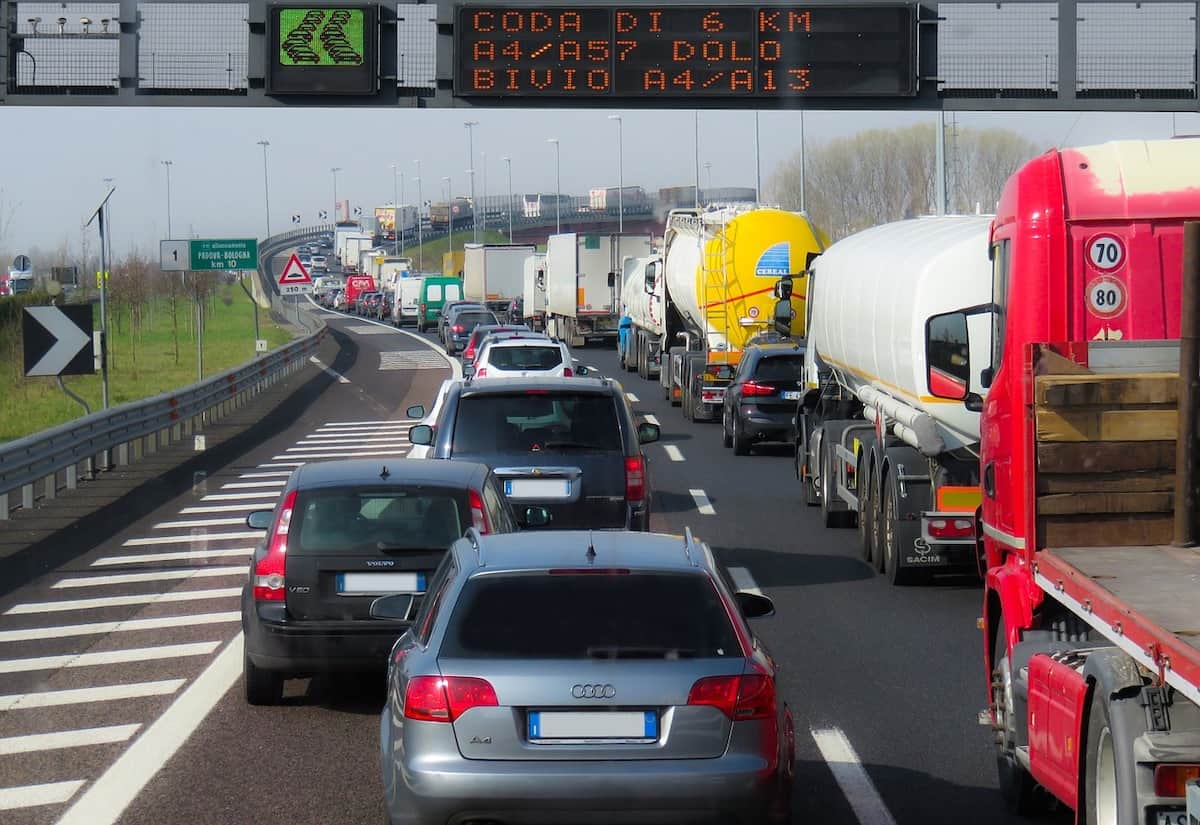A Gridlocked Nation: Japan’s ETC System Collapse Exposes Fragile Backbone of Smart Infrastructure
A Midnight Malfunction, A Morning Meltdown
TOKYO — In the early hours of Sunday, what should have been a routine late-night cruise along Japan’s famously efficient expressways turned into a full-blown national disruption. At approximately 12:30 a.m. on April 6, the Electronic Toll Collection (ETC) system—used by more than 95% of highway users—suffered a catastrophic failure. By morning, the ripple effects had paralyzed traffic across seven prefectures, raising urgent questions about Japan’s digital infrastructure resiliency, crisis preparedness, and the cost of overreliance on automation.
“Three and a half hours to move 1.5 kilometers,” said one driver who had been stuck near Okazaki Interchange (IC) on the Tomei Expressway. “I pay to use the highway. How is this acceptable?”
With major arteries like the Chuo, Tomei, and Shin-Tomei Expressways ensnared in sudden gridlock, a nation celebrated for its technological precision found itself staring into the abyss of digital vulnerability.
Chaos at the Gates: How One Glitch Snarled a Nation
By 10:30 a.m., the scope of the outage was clear. Tokyo, Kanagawa, Yamanashi, Shizuoka, Aichi, Gifu, and Mie—regions that span the heart of Japan’s automotive and logistics infrastructure—were all affected. ETC lanes were rendered inoperable, and smart interchanges went dark.

At toll booths where staff were present, barriers were manually lifted to ease congestion. At unstaffed locations, NEXCO Central Japan hastily implemented digital workarounds, allowing vehicles to pass freely and requesting post-facto payments via QR codes.
But the effort came late. At Nisshin City in Aichi Prefecture, traffic cameras captured thick lines of blinking hazard lights and flustered drivers. At Okazaki IC, shoulder queues once stretching beyond two kilometers dissipated only after 2 p.m.—an hour after NEXCO's announcement to open lanes.
The result: a cascade of traffic delays, growing public anger, and, tragically, preventable accidents.
Accidents Amid the Anguish: Human Toll in a Digital Collapse
At 12:20 p.m., a five-vehicle collision occurred near Toyokawa IC on the Tomei downbound lane after a truck swerved to avoid congestion. Five individuals were injured, and a section of the highway was promptly shut down. Meanwhile, three additional rear-end collisions were reported around Hachioji and Mitaka toll gates on the Chuo Expressway—thankfully with no injuries.

“These weren’t isolated incidents,” a logistics manager observed. “This is what happens when fail-safes don’t exist in systems we take for granted.”
The knock-on effects were immediate and severe. Delivery schedules were shattered, emergency travel plans postponed, and everyday commutes turned into ordeals. One elderly man en route to a memorial service debated turning back. A woman in her 60s worried aloud about missing a hospital visit to see her son.
A Public Outcry: "We Paid for This. Why Are We Paying Again?"
Social media platforms exploded with fury. A widely shared sentiment echoed across comments:
「お金を払って高速を使っているのに、何時間も拘束されるのは理不尽だ。」 “It’s unreasonable to be stuck for hours after paying for the highway.”
Frustration quickly turned political. The demand for immediate toll waivers—“無料開放”—gained traction, with many questioning whether users should shoulder the cost of a system breakdown they had no control over.
Equally damning was the criticism of communication failures. Several drivers reported discovering the outage only at the toll gate, with no prior alerts from digital signage or official social media channels. For a nation as digitally integrated as Japan, this communications blackout felt particularly jarring.
“The system broke down. Fine. But why did no one tell us before we entered the highway?” a 40-year-old commuter asked angrily.
Under the Hood: How a Technological Triumph Turned Into a Single Point of Failure
Electronic Toll Collection (ETC) systems automate toll payments, allowing vehicles to pass through toll points without stopping. These systems typically utilize technology like radio-frequency identification (RFID) transponders in vehicles that communicate with roadside readers to deduct the appropriate toll.
Introduced nationwide in 2001, the ETC system revolutionized highway travel in Japan. By January 2025, 95.3% of vehicles utilized it daily—an astounding 7.74 million users on average. It eliminated bottlenecks, streamlined logistics, and became a quiet but essential cog in Japan’s mobility machine.
Adoption Rate of ETC Systems on Japanese Expressways Over Time
| Date / Period | ETC Usage Rate (%) | Source/Note |
|---|---|---|
| By August 2006 | ~60% | Approximately 60% of transactions at tollgates were via ETC. |
| End of March 2011 | 86.2% | Reported by MLIT, based on Survey by the Organization for Road System Enhancement. |
| As of January 2014 | 89.7% | Reported average usage rate at toll gates on expressways. |
| Around 2014 | ~90% | Average penetration rate at toll gates nationwide. |
| By 2021 | >90% | Over 90% of vehicles on highways were using ETC. |
| End of March 2024 | 94.7% | Reported by Statista; includes ETC 2.0 usage. |
| End of March 2025 | ~94.3-94.9% | NEXCO EAST data shows consistent rates around this range, including ETC 2.0 usage. |
But this very ubiquity has become its Achilles’ heel. When the system went down, there were few alternative pathways. General lanes were overwhelmed. Manual card processing, as seen at Kofu-Showa IC on the Chuo Expressway, slowed to a crawl. Without effective redundancy, the infrastructure buckled under its own automation.
As one transportation analyst put it, “We’ve engineered convenience but ignored resilience. This was a system optimized for the best-case scenario.”
Turning Point for Infrastructure: Industry at a Crossroads
This failure has lit a fire under Japan’s transportation and technology sectors. Calls are growing for not just patchwork fixes, but sweeping reforms.
Industry insiders say the focus must now shift toward:
- Advanced Fail-Safes: Systems that can detect malfunctions early and activate real-time override protocols.
- AI-Driven Predictive Maintenance: Algorithms that monitor infrastructure health and preempt potential failures.
- Distributed Redundancy Networks: Decentralized backups to prevent total collapse.
System redundancy in critical infrastructure involves incorporating backup or parallel systems and components to prevent complete failure if a primary element malfunctions. This fail-safe approach ensures continuous operation of essential services by having alternative resources, like distributed networks, ready to take over, thereby maintaining stability and availability.
A consultant familiar with Japan’s highway system remarked, “It was a failure of imagination rather than code—of not asking what could go wrong.”
Moreover, experts argue that government oversight may soon become more stringent. Japan’s Ministry of Land, Infrastructure, Transport and Tourism could mandate periodic audits, cybersecurity checks, and technology refresh cycles, creating both pressure and opportunity across the infrastructure supply chain.
Market Impact: Short-Term Pain, Long-Term Opportunity
Logistics firms and highway operators are already feeling the tremors. Traffic jams caused delivery delays that threaten supply chain promises. In industries dependent on just-in-time inventory, even a single day of delays can cause cascading disruptions and reputational damage.
Just-in-Time (JIT) inventory is a management strategy where materials are ordered from suppliers and received only as they are needed in the production process or to fulfill customer orders. This approach aims to minimize inventory holding costs and waste, but it relies heavily on efficient logistics and carries risks related to supply chain disruptions.

Equity markets have begun to take note. Analysts predict short-term volatility in transportation and infrastructure-linked equities. However, several see opportunity in the ashes.
- Cybersecurity Firms providing resilient, fault-tolerant networks are poised to benefit.
- Smart Infrastructure Funds may see renewed investor interest as governments allocate stimulus to modernization.
- IoT and AI Providers capable of embedding real-time anomaly detection into infrastructure grids may become indispensable partners.
A market strategist noted: “Whenever a failure highlights fragility, capital follows the fix. This is a prime case for digital reinvestment.”
Strategic Implications: From System Failure to Systemic Evolution
This ETC crisis may prove to be more than just a technical hiccup—it could be a watershed moment.
Digital Infrastructure Isn’t Optional—It’s Existential
With more systems becoming digitized, from tolls to trains to utilities, the importance of robust infrastructure has grown. Investors and policymakers alike must assess digital systems not just for efficiency, but for resiliency.
Public-Private Collaborations Will Shape the Next Decade
Expect an uptick in collaborative projects between highway operators, government agencies, and private tech firms. These ventures could not only modernize infrastructure but also unlock new investment frontiers.
Shift in Consumer Behavior
Public sentiment has been deeply shaken. In the short term, drivers may avoid expressways. Long-term, we could see growth in alternative transportation methods, including high-speed rail and ride-sharing—potentially changing the country’s mobility landscape.
Revaluation of Infrastructure Risks
For institutional investors, this incident is a signal to reassess the risk premium of legacy systems. Those with built-in redundancy and proactive upgrade roadmaps will likely see more favorable valuations.
The Road Ahead: Restoration, Reform, and a Redefinition of Trust
As NEXCO prepares to address the public in its 6:30 p.m. press conference in Nagoya’s Naka Ward, the stakes are high—not just for traffic, but for trust. This isn’t just about restoring a system. It’s about restoring confidence in the digital scaffolding that underpins everyday life in modern Japan.
“This was a stress test,” said a systems engineer anonymously. “And the system failed. The question now is—how will we rebuild it stronger?”
In the end, this may become a defining case study in 21st-century infrastructure governance: a story not just of what went wrong, but of how a crisis forced a nation—and its markets—to adapt, evolve, and build a smarter, more resilient future.
